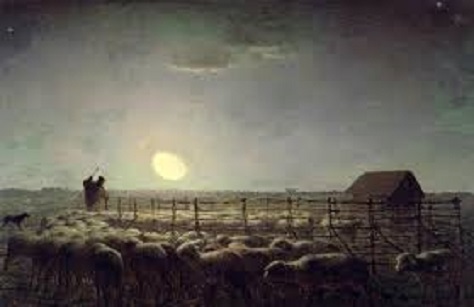Spadina Literary Review — edition 22 page 18
pensées

jean-françois millet, the sheepfold moonlight
How to Look at the Moon
by Daniel Hudon
Appreciate that you are now about to embark on a Great Thing, as great as traveling to see the Great Wall Of China or to admire the Taj Mahal in India. Appreciate that unlike these aforementioned expeditions, you won’t need much time. Start with five minutes. But on the other hand, allow the rest of your life. If a project is worth doing, it’s worth doing well.
Friends will interfere with your plans and invite you out to dinner or to the movies. With a wink, tell them you are embarking on a Great Thing and leave it at that. It will endow your cause with intrigue.
The moon has been waltzing around the Earth for a few billion years but no one paid any attention until our ancestors started walking upright on the savannahs of Africa two million years ago. Even then, they were usually too busy hunting and gathering to enjoy the view. Since that time, not much has changed except the nature of what is hunted and gathered. Think of all those lovely crescents waxing unseen into the evenings — they will be unseen no longer!
Before enjoying the ever-changing phases of the moon, you must first find it. Look out the window. Do you see the moon? If so, begin looking at it. You don’t need to worship it like it’s some ancient or new-age goddess. Nor do you need to imbue it with all your hopes and fears, your romantic ups and downs. Just look at it. Admire it like you would admire the face of a wise old friend. Forget your woes, the things you have to do tomorrow, your unfinished projects, great or small. Just look at the moon. If you accomplished nothing else today, at least you looked at the moon.